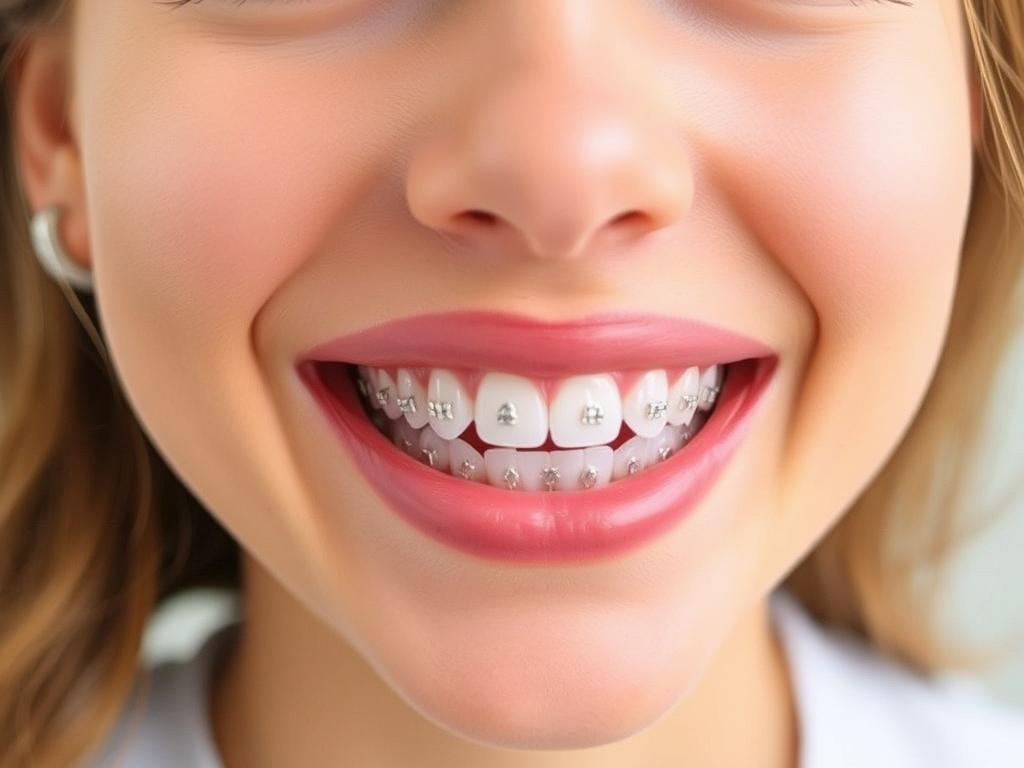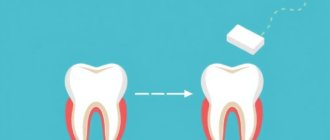Содержание
- 1 Introduction: Why Understanding Braces Costs Matters
- 2 What Influences the Cost of Braces?
- 3 Breaking Down the Cost of Braces: What Are You Paying For?
- 4 How Insurance Affects the Cost of Braces
- 5 Payment Options and Financing for Braces
- 6 Additional Costs to Consider When Budgeting for Braces
- 7 How to Choose the Right Type of Braces Based on Cost and Needs
- 8 FAQs About Braces Costs
- 9 Tips to Save Money on Braces
- 10 How to Get Started with Braces
- 11 Conclusion
Introduction: Why Understanding Braces Costs Matters

Getting braces is a big decision, both for your health and for your wallet. If you’ve ever wondered, “How much do braces cost?” you’re not alone. The price of braces can vary widely depending on many factors, and understanding those variables can help you make an informed choice. Whether you’re a teenager considering traditional metal braces or an adult exploring clear aligners, knowing what to expect financially is as important as knowing what to expect physically.
In this article, we’ll break down the costs associated with orthodontic treatment, explore different types of braces, look at how insurance affects prices, and even share practical tips on managing expenses. By the end, you’ll have a clear picture of what it actually means when someone asks, “How much do braces cost?”
What Influences the Cost of Braces?

The cost of braces isn’t set in stone; it depends on several factors that affect the final price. Let’s explore the main components that influence how much you’ll pay for braces.
1. Type of Braces
One of the biggest factors is the kind of braces you choose. Here are some common types along with general cost ranges:
| Type of Braces | Description | Typical Cost Range (USD) |
|---|---|---|
| Traditional Metal Braces | Metal brackets and wires, the most common and usually the most affordable option. | $3,000 – $7,000 |
| Ceramic Braces | Tooth-colored or clear brackets that are less visible but can be more fragile. | $4,000 – $8,000 |
| Lingual Braces | Brackets placed behind the teeth for invisibility but often more uncomfortable. | $8,000 – $10,000+ |
| Clear Aligners (e.g., Invisalign) | Removable, transparent trays that gently move teeth. | $3,000 – $8,000 |
As you can see, traditional metal braces tend to be the least expensive, while lingual braces usually top the cost chart. Clear aligners provide a middle ground, depending on the complexity of your case.
2. Geographic Location
Where you live plays a considerable role in the price. Orthodontic services tend to be more expensive in metropolitan areas or regions with a higher cost of living. For example, braces in New York City or San Francisco may cost more than in smaller towns or rural areas. This is because overhead expenses, such as rent for the office and staff salaries, contribute to the overall cost of treatment.
3. Severity of the Case
Not all orthodontic treatments are created equal. The level of complexity – whether you’re correcting minor crowding, a simple gap, or a severe bite problem – determines the duration and difficulty of treatment, which in turn affects cost. Longer treatment times and more complicated cases typically run higher in terms of cost due to additional appointments, adjustments, and materials.
4. Orthodontist’s Experience and Reputation
More experienced or highly sought-after orthodontists may charge premium fees for their expertise. It’s like choosing a specialist over a generalist; the quality of care can justify a higher price tag. However, many patients find that paying a bit more for a trusted professional is worth the investment in their smile and confidence.
5. Insurance and Payment Plans
Insurance coverage and financing options can significantly influence what you actually pay. Some dental insurance plans cover orthodontics partially or completely, especially for children under 18. For adults, coverage might be more limited. Additionally, many orthodontists offer payment plans or financing options, which can spread out the cost over time and make treatment more affordable.
Breaking Down the Cost of Braces: What Are You Paying For?
When you ask, “How much do braces cost?” it’s important to understand what is included in that price. Typically, the total cost of braces covers several aspects of care throughout the treatment process.
- Initial Consultation and X-rays: Before treatment begins, your orthodontist will assess your teeth, take X-rays, and create a treatment plan. This initial step may or may not be included in the overall cost.
- Braces and Materials: The brackets, wires, elastics, or aligner trays are included here. Higher-end materials or more discreet options tend to cost more.
- Regular Adjustments and Checkups: Orthodontic appointments happen every 4-8 weeks to adjust wires or provide new aligner trays. These visits are typically factored into the price.
- Retention Phase: After braces come off, you’ll often need retainers to maintain your new smile, which may or may not be included in the initial cost.
- Emergency Visits: In some cases, emergency visits due to broken brackets or wires might incur extra charges.
Sample Cost Breakdown Table
| Service | Estimated Cost (USD) | Included in Total Braces Cost? |
|---|---|---|
| Initial Consultation | $0 – $200 | Sometimes |
| Impressions and X-rays | $100 – $300 | Usually |
| Braces or Aligners | $3,000 – $10,000 | Yes |
| Adjustment Visits | Included in overall price | Yes |
| Retainers | $100 – $500 | Sometimes |
| Emergency Visits | $50 – $200 per visit | Usually Not |
Understanding this breakdown can help you budget better and ask your orthodontist the right questions during your consultation.
How Insurance Affects the Cost of Braces
Dental insurance can be a game-changer when it comes to orthodontic expenses. Many people ask, “Does insurance cover braces?” The answer depends on your specific plan, the age of the patient, and sometimes the type of braces chosen.
Types of Dental Insurance Coverage for Braces
- Partial Coverage: Many dental plans cover about 50% of the cost of braces up to a lifetime maximum (typically $1,000 to $3,000).
- Full Coverage for Children: Some plans offer full orthodontic coverage for children under 18 but not for adults.
- No Coverage for Adults: Unfortunately, many adult dental plans exclude braces for anyone over 18.
- Flexible Spending Accounts (FSA) and Health Savings Accounts (HSA): These tax-advantaged accounts allow you to set aside pre-tax money to pay for orthodontic treatment.
Tips for Maximizing Your Insurance Benefits
- Verify Coverage Early: Contact your insurance provider before starting treatment to understand what’s covered and what isn’t.
- Submit All Required Documentation: Your orthodontist will need to provide treatment plans and codes for your insurance claims.
- Understand Lifetime Limits: Some plans only cover braces once per lifetime, so consider this if you might need treatment again later.
Payment Options and Financing for Braces
Even if insurance only covers part of the cost, there are ways to make braces more affordable. Many orthodontic offices recognize that treatment can be expensive, so they offer flexible payment options.
Common Payment Methods Include:
- Upfront Payment Discounts: Paying the full amount at once often qualifies you for a discount.
- Monthly Payment Plans: Many orthodontists offer interest-free or low-interest monthly financing plans that stretch payments out over the treatment period.
- Third-Party Financing: Companies like CareCredit provide specialized medical credit cards for healthcare expenses.
- Tapping into FSAs/HSAs: As mentioned, these accounts help cover braces costs with tax advantages.
Additional Costs to Consider When Budgeting for Braces

While the main cost of braces covers most treatment needs, there are sometimes extra expenses to keep in mind.
1. Retainers After Braces
After your orthodontic treatment is completed, retainers are necessary to keep your teeth in position. Some orthodontists include the cost of the initial retainer in your treatment fees, but replacements can be costly, sometimes ranging from $100 to $500.
2. Emergency Repairs
Popped wires, broken brackets, or lost aligner trays may require extra office visits or replacement materials, which might not be included in the original cost.
3. Additional Procedures
Sometimes, before getting braces, you may need extra dental work such as tooth extractions, fillings, or dental cleanings. These costs are usually separate from orthodontic fees.
4. Follow-Up Visits After Treatment
Periodic checkups after braces come off are important but might not be covered by your braces cost. Make sure you understand the post-treatment care plan.
How to Choose the Right Type of Braces Based on Cost and Needs
When deciding “How much do braces cost?” it’s tempting to focus mainly on price, but it’s equally important to consider what fits your lifestyle and treatment goals.
Consider These Factors When Choosing Braces:
| Type | Cost | Visibility | Comfort | Duration of Treatment | Maintenance |
|---|---|---|---|---|---|
| Traditional Metal Braces | Least Expensive | Most Visible | Moderate Discomfort | 6-24 Months | Frequent Office Visits |
| Ceramic Braces | Moderately Expensive | Less Visible | Moderate Discomfort | 6-24 Months | Stain Care Required |
| Lingual Braces | Most Expensive | Invisible from Front | May Cause Tongue Irritation | 6-24 Months | Regular Adjustments Needed |
| Clear Aligners | Moderate to High Cost | Nearly Invisible | Generally Comfortable | 6-18 Months | Requires Discipline Wearing 20-22 hrs/day |
If you value aesthetics and comfort and are willing to pay a bit more, clear aligners or ceramic braces might be the right choice. For budget-conscious patients, traditional metal braces remain a solid option.
FAQs About Braces Costs
Q1: Why do braces cost so much?
Orthodontic treatment involves specialized training, custom devices, ongoing adjustments, and sometimes advanced technology. These factors, combined with office overheads and materials, contribute to the cost.
Q2: Can I get braces if I don’t have dental insurance?
Absolutely! Many orthodontists offer payment plans or financing options, and some third-party medical credit providers specialize in dental care loans.
Q3: How long does orthodontic treatment usually last?
Treatment times vary from 6 months to over 2 years depending on the complexity of your case.
Q4: Are clear aligners more expensive than metal braces?
Often yes, though the price overlap between clear aligners and ceramic braces means that in some cases, clear aligners may be about the same or only slightly more.
Q5: Will braces damage my teeth?
No, braces properly applied by a licensed orthodontist and cared for by the patient do not damage teeth. Oral hygiene is crucial during treatment to prevent decay and staining.
Tips to Save Money on Braces
- Shop Around: Get consultations from multiple orthodontists to compare prices and treatment plans.
- Consider Dental Schools: Orthodontic services at dental schools are often offered at a discount with supervision by experienced professionals.
- Use Insurance Wisely: Maximize your benefits and understand limits before starting treatment.
- Maintain Good Oral Hygiene: Avoid extra costs from emergency visits by keeping your mouth clean and avoiding damage to your braces.
- Ask About Discounts: Some offices offer discounts for upfront payments or family members.
How to Get Started with Braces
If you’re ready to explore orthodontic treatment, here’s a simple step-by-step guide to begin:
- Schedule a Consultation: Find a reputable orthodontist and book an initial exam to discuss your needs.
- Review Your Treatment Options and Costs: Ask detailed questions about the price, payment plans, and insurance coverage.
- Plan Your Budget: Consider financing options or using FSAs/HSAs to make payments manageable.
- Start Treatment: Prepare for appointments and follow your orthodontist’s instructions carefully.
- Maintain Your Smile: After treatment, commit to wearing retainers and continue good oral habits.
Conclusion
So, how much do braces cost? There isn’t a one-size-fits-all answer, but understanding the factors involved gives you valuable insight. From the type of braces and the severity of your case to your location and insurance coverage, many variables shape the total price. By researching your options, asking the right questions, and exploring payment plans, you can find a solution that fits your budget and lifestyle. Braces are more than an expense — they are an investment in your health, confidence, and long-term smile. With the right information, you can confidently take that first step toward a beautiful, straight smile without being caught off guard by costs.







